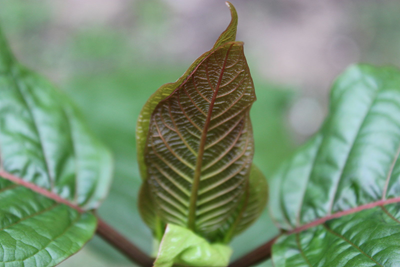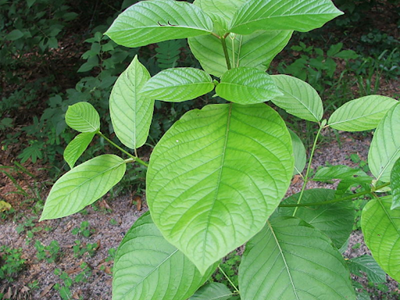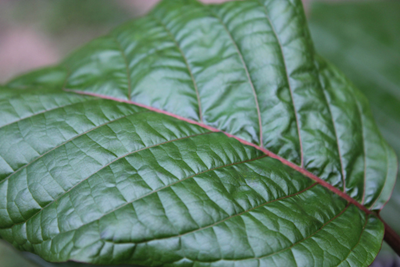- What is Pasteurization?
- Benefits of Pasteurization
- Consistency in Product Quality
- Compliance with Federal Regulations
- Potential Experience Improvement
- Easy and Quick Sanitation
- How Does Pasteurization Work?
- Why Should Kratom Be Pasteurized?
- How Kratom is Pasteurized
- Format
- Heat
- Measurement
- Rapid Cooling
- What About UV Light Exposure?
- The Bottom Line
- Image Credits
You may have heard about Kratom, the fantastic tropical evergreen from Southeast Asia whose leaves have tons of beneficial alkaloids in them. But have you heard of Kratom pasteurization?
Many Kratom consumers know to check the seller they’re considering to ensure the Kratom source gets its products evaluated in an outside lab. You should also think about whether your Kratom is pasteurized.
What is Pasteurization?
This process helps diminish the presence of certain viruses and pathogens. In 1860, French chemist Louis Pasteur discovered he could stave off the fermentation of alcoholic beverages by applying high heat.
Pasteur reasoned that his discovery would be a boon to vineyards and breweries because they would not have to throw away ruined products needlessly. Before long, the process, called pasteurization after its discoverer, was applied to dairy products to prolong shelf life and make them safer.
Dairy producers found that high heat (between 135°F and 150°F) eliminates virtually all the pathogens in milk and other dairy products, including the bacteria that causes tuberculosis – Mycobacterium Tuberculosis.
Pasteurization was a revolution in the food and farming industry. For many sectors, not just dairy, Pasteur’s revelation meant they would waste fewer products and keep their customers safe and happy.
Another bonus is that pasteurization leads to longer shelf life for foods that have been subjected to the thermal process, so their expiration date is farther in the future, meaning they can be used for extended periods.
Benefits of Pasteurization
For almost every product you ingest – milk, semi-solids, or Kratom – pasteurization also leads to better quality. Many significant benefits have made this process de rigueur for food producers and Kratom sellers.
When you use a pasteurization process, you can keep your products at a high quality consistently. When you’re selling to a large group of customers, you want them to return to your business, so your products have to be consistently high quality.
Especially when you buy online, pasteurization ensures that the Kratom quality you’re getting is always top-notch.
These days, most dairy products and other perishables are pasteurized according to state and federal food safety regulations. For example, some laws forbid unpasteurized eggs from being served in public schools to avoid a large-scale health crisis from Salmonella.
With pasteurization, you never have to worry if the Kratom company you’re interested in complies with federal regulations.
Some bacteria can make food smell and taste off; when you remove that bacteria, you’re also taking away the factor that creates the unpleasant aromas or flavors. In terms of experience, pasteurization removes these from Kratom, so all you taste and smell is pure, herbal crushed leaves.
Pasteurization is a simple way to eliminate a host of pathogens like Tuberculosis, Salmonella, Diphtheria, Listeria, and Scarlet Fever. There are plenty of ways to sanitize food, but none are as quick and effective as Louis Pasteur’s method. Other sanitation processes may include chemicals or radiation, which aren’t the most healthful or beneficial for you.
How Does Pasteurization Work?
As food ages, the enzymes in the bacteria cells are used for respiration and primary metabolism. Bacteria can use these enzymes for basic cellular functioning when the temperature is between 40° to 140°F.
When food is frozen or heated quickly, the extreme temp deactivates the enzymes, which results in denaturation – the splitting of weak links in protein molecules. The food’s acidity determines how high the temperature needs to be for pasteurization and the product’s shelf life.
Why Should Kratom Be Pasteurized?
The pathogens and bacteria present in unpasteurized ingestibles like foods, liquids, or Kratom are not healthy. The pasteurization process eliminates Diphtheria, Scarlet Fever, Tuberculosis, and nasty bacteria like Listeria, Salmonella, and Staphylococcus aureus.
The unique color strains of Kratom produce unlike results: Red vein promotes peace, green encourages a more focused outlook, and white is excellent for pep in your step. Some maintain Kratom can even help with opiate withdrawal symptoms.
If you aren’t careful about where you buy your Kratom, you may be purchasing something more than Kratom powder. Leaves that haven’t been harvested correctly – if they are left on the ground too long – can collect mold and other bacteria, which is why you need to buy pasteurized Kratom powder.
How Kratom is Pasteurized
Before pasteurization starts, Kratom leaves must be collected appropriately. Kratom growers in Southeast Asia know precisely when to harvest the Kratom leaves to ensure the highest alkaloid content.
Kratom powder is heated to high temps and then cooled rapidly again. The pasteurization process has four elements: Format, heat, measurement, and rapid cooling.
Kratom powder needs to be heated and cooled uniformly, and there are several methods. Some processors use long transparent bags so that all the powder heats at an even pace.
To successfully pasteurize Kratom powder, so there are no pathogens or bacteria, the temperatures need to reach and stay at 160°F for 4-5 hours.
You have to keep track of how hot the Kratom powder gets when it’s being pasteurized. It’s not just the oven that has to remain at 160°F for 4-5 hours; the core temp of the Kratom must as well.
Bacteria breed more quickly in warmer temperatures, so getting the powder back down to room temperature fast after it has been pasteurized is a significant concern. You need to cool your Kratom powder as well as heat it to pasteurize it properly.
What About UV Light Exposure?
Another way to rid Kratom powder of any unwanted bacteria or pathogens is to subject the product to UV light. This type of light can eradicate many kinds of viruses or bacteria, but the method has deterrents.
When UV light is used to purify a sizable amount of Kratom powder, the light will only be useful on the outer layer. The powder must be continuously agitated to ensure all of it gets the treatment.
Heat penetrates deeply and evenly in the pasteurization process to rid your Kratom powder of anything that may harm you.
The Bottom Line
When you’re in the market for Kratom, you want the very best. Kratom trees are mainly indigenous to Southeast Asia, and this miraculous botanical travels halfway around the globe to get to your doorstep.
Pasteurization is an essential step in eradicating any pathogens or bacteria that may be hiding in your Kratom powder. To make the most of your health and wellness regimen, look for reputable sellers that pasteurize their Kratom.
Image Credits
https://commons.wikimedia.org/wiki/File:Kratom_leaf.JPG
https://commons.wikimedia.org/wiki/File:Green_Kratom_Leaf.jpg
- What is Pasteurization?
- Benefits of Pasteurization
- Consistency in Product Quality
- Compliance with Federal Regulations
- Potential Experience Improvement
- Easy and Quick Sanitation
- How Does Pasteurization Work?
- Why Should Kratom Be Pasteurized?
- How Kratom is Pasteurized
- Format
- Heat
- Measurement
- Rapid Cooling
- What About UV Light Exposure?
- The Bottom Line
- Image Credits



